Top 10 Cancer Stem Cell Killing Nutrients (2025)
Our diets can both feed and starve cancer cells’ productivity by affecting multiple mechanisms that promote cancer. Cancer cells rely on the ability to multiply, repair, differentiate, and evade apoptosis (programmed cell death). The recent discovery of cancer stem cells has scientists looking at a whole new approach to preventing and treating cancer.
Cancer stem cells have a pro-survival strategy involved in promoting cancer cell invasion, growth, and metastasis (9). These cancer stem cells are unlike typical stem cells because they are designed to promote cancerous activities including: (4, 12)
- The ability to self-renew.
- Resistant to chemotherapeutic drugs
- Self-sufficient
- Not influenced by anti-growth signals or by contact with other stem cells
- Not regulated by normal cell functions including apoptosis
- Promote inflammation.
- Regulated by tissue invasion and metastasis.
- Sustained by angiogenesis and flawed cellular energy.
Fortunately, cancer stem cells are affected by phytochemicals or the nutrients in our diets. These nutrients are designed to prevent and treat the pro-survival cancerous properties that equip a cancer stem cell to function. The following 10 nutrients are phytochemicals found in our diets which manipulate the communication pathways between the cancer stem cell and the corresponding cancer cell.
1. Ursolic Acid
Ursolic acid is a dietary compound found in the waxy coating of fruits such as apples as well as herbal medicines like holy basil. Exhibiting powerful anticancer potential, ursolic acid has been effectively shown to treat the following cancers: (1)
- Colon
- Skin
- Breast
- Lung
- Cervical
- Pancreatic
- Prostate
- Myeloma
- Esophagus
All underlying properties in which ursolic acid is capable of preventing and treating cancer are not yet fully understood. However, researchers are aware of ursolic acid’s ability to reduce enzymes that promote inflammation in the body and contribute to abnormal cell cycles, reducing the expression of genes that turn on cellular apoptosis in the cancer stem cell.
This process works to trigger the “cell suicide” switch to occur in cancerous cells and inhibits cancer cell DNA replication from occurring which reduces tumor growth and metastasis. ( 1)
Furthermore, ursolic acid has been shown in studies to reduce tumor size and concentration. You too can inhibit the development of tumors forming in your body by increasing your dietary intake of ursolic acid.
Many experts use a dosage of 150-300 mg, 3 times daily for optimal benefits. This is significantly more than you could get from using apple peels and taking holy basil (also called Tulsi) which has between 5-10 mg of ursolic acid per serving. Apple peels and holy basil do have several other phytonutrients that are beneficial for the body’s immune system and should continue to be used. Here is a helpful article on holy basil and Tulsi tea.
2. Piperine
The mortality rate of colorectal cancer worldwide is estimated to be more than 639,000 people annually (1). Perhaps partly responsible for this very high statistic is that a carcinogenic bacteria known as H. pylori invade the gastrointestinal lining of half of the global population.
Piperine, known as the “King of Spices” may help to lower the incidence of cancers relating to the stomach and breast. In fact, piperine has been identified as one of the major compounds that target cancer stem cells of breast tumors (4). (2)
Piperine is a compound found in black pepper that has anecdotally been used to treat common ailments such as colds, and fever and most recently has been studied for its anticancer properties.
Piperine inhibits H. pylori from adhering to a surface within the gastrointestinal tract and therefore prevents this bacterium from releasing toxins that cause stress, and inflammation and promote carcinoma cells. One possible mechanism of piperine antimutagenic properties is that it prevents proteins from binding, which would cause genes to express factors promoting cancer. (2)
Reap the benefits of piperine by adding black pepper to your diet daily. Crack fresh black pepper onto salads, flavor meat, and add into fresh sauces, dips, and soups.
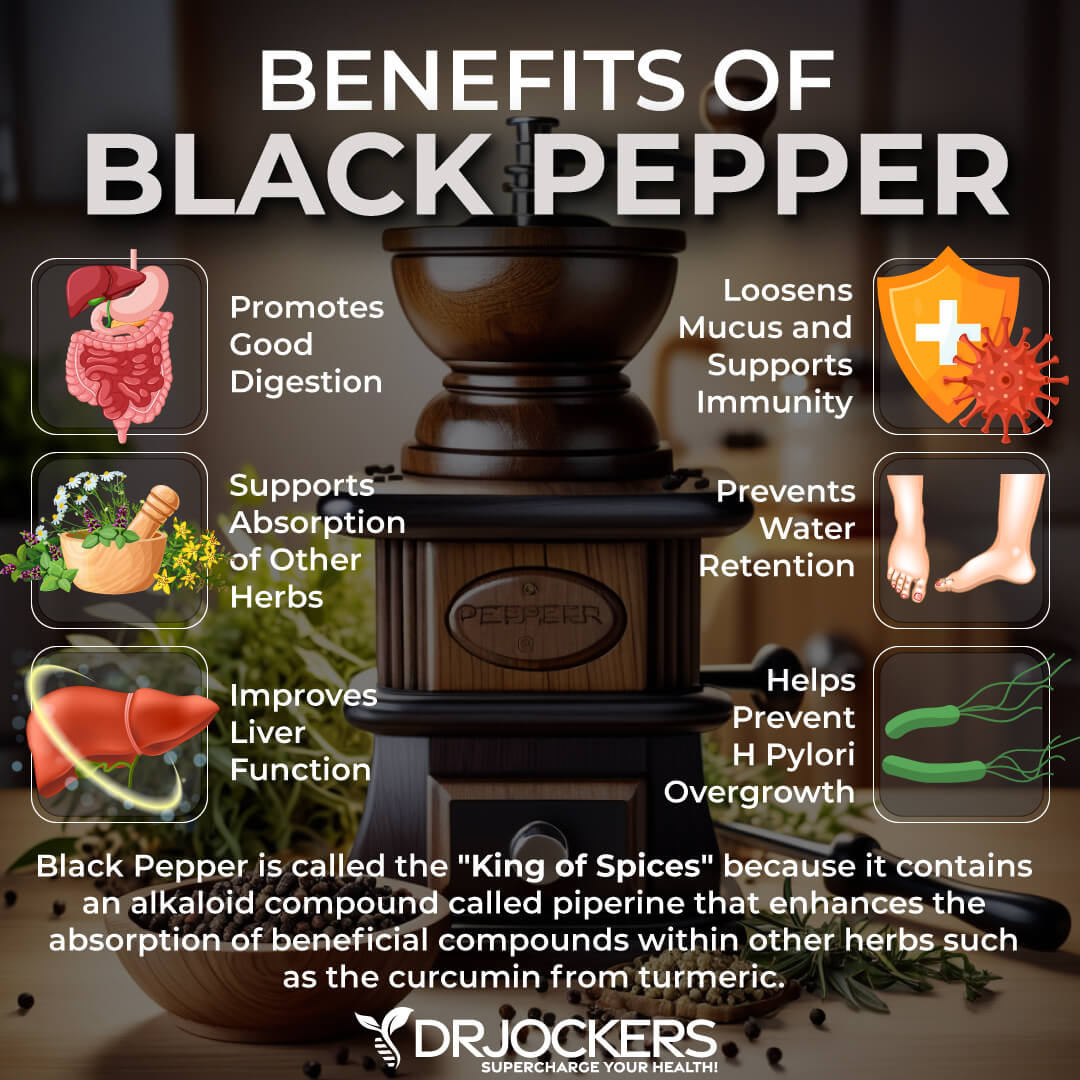
3. Lycopene
A bioactive compound which has been shown to destroy cancer cell activity is lycopene. Lycopene gives fruits and vegetables their red fleshed pigmentation. Some of these lycopene-rich food sources are tomatoes, watermelons, pink grapefruit, and red oranges.
Anticancer properties of lycopene stem from its ability to cause cytotoxic and pro-apoptotic effects in the cancer stem cell. In other words, lycopene can disrupt cancer stem cells’ communication pathways enable a cancer cell to live and cause it to die. Lycopene has been shown to protect against cancers including: (3, 4)
- Prostate
- Lung
- Colon
- Cervix
Consuming a diet rich in biologically available nutrients such as lycopene is as simple as snacking on watermelon in the summer months or supplementing breakfast with a bowl of grapefruit in the winter. Although the benefits of lycopene can be achieved from juicing, it is always best to consume the pulp from citrus foods by adding this back into your drink.
When preparing a homemade sauce, increase the availability of lycopene to be absorbed by your body by cooking down tomatoes with their skins on to optimize their nutrient content.
When taking a supplement, the anticarcinogenic properties of lycopenes have been shown to increase when combined with vitamin E and selenium (4). If you are looking to reduce unnecessary carbs and stay on a ketogenic diet, you may consider supplementing with 30-50 mg of lycopene, 1-2 times daily. This is roughly the same amount you would get from eating 2 servings of organic tomato sauce.

4. Isothiocyanates
Isothiocyanates are synthesized in our bodies by compounds with strong antioxidant potential. One such form of isothiocyanates is sulforaphane. Cruciferous vegetables contain this anti-cancer compound which promotes detoxification, activates cancer-inhibiting agents, boosts immunity, and protects the body against breast, stomach, spleen, prostate, and colon cancer. (7)
Isothiocyanates inhibit cancer in the following ways: (7, 8)
- Stimulate Nrf2 signaling pathways associated with blocking tumor formation.
- Induce phase 2 enzymes which increase powerhouse antioxidants including glutathione.
- Improve healthy gut microflora by reducing carcinogenic bacteria such as H. pylori linked to stomach cancer.
- Improve antioxidant potential.
- Reduce inflammation.
- Remove carcinogens.
When seeking to achieve the benefits of isothiocyanates to prevent and treat cancer, aim to consume at least two servings of cruciferous vegetable sprouts daily for optimal impact. Not all sprouts are created equal- consider eating broccoli, cauliflower, kale, and brussel sprouts. Broccoli and cauliflower sprouts alone contain up to 100 times more of the compounds required to create isothiocyanates (8).
If you would like to supplement with sulforophane, many health practitioners recommend taking 300-600 mg, one to two times daily. This is especially good for hormone-sensitive cancers as the isothiocyanates are powerful estrogen metabolizers.
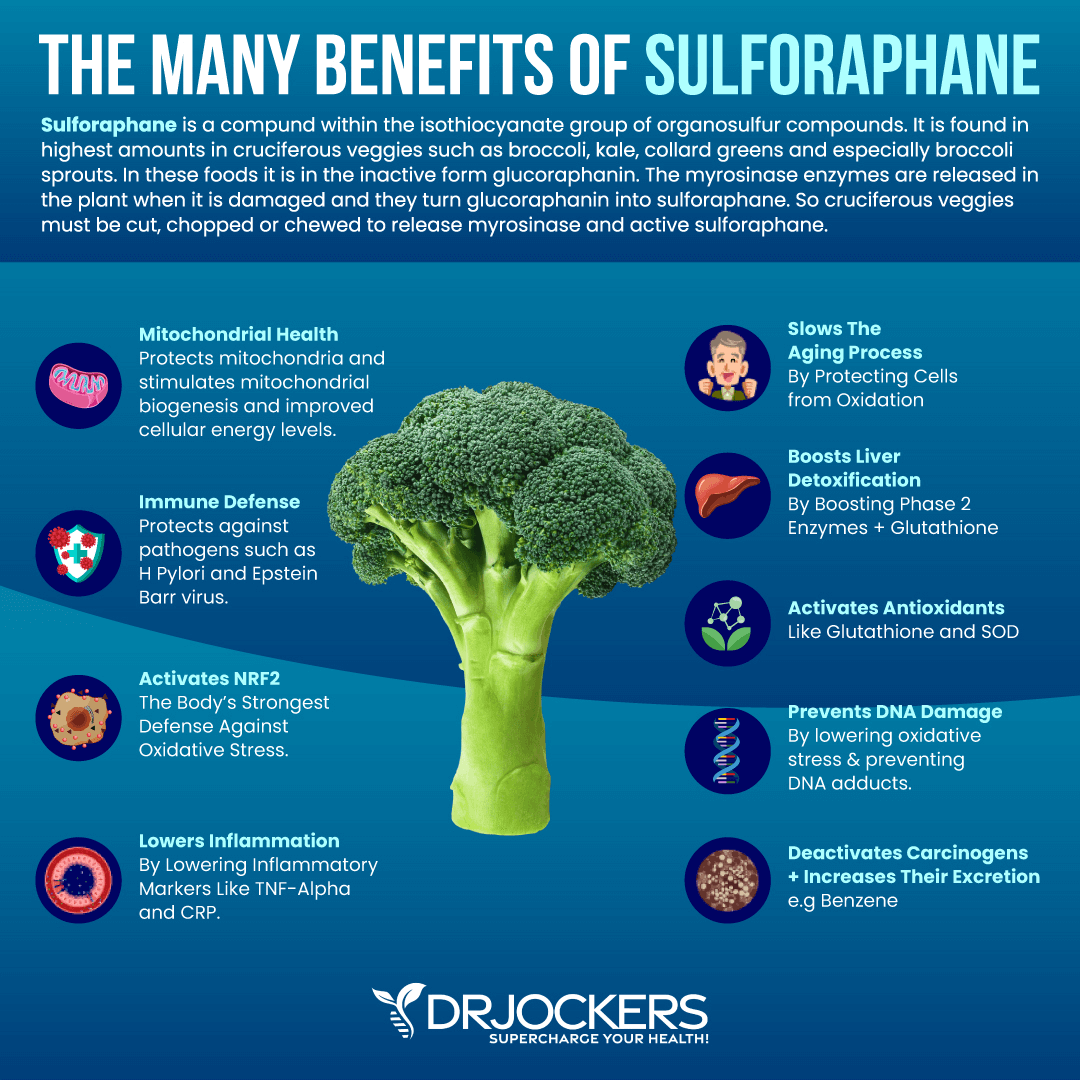
5. Curcumin
Curcumin is an extract found in the spice turmeric and possesses antioxidant, anti-inflammatory, and anti-cancer abilities. Curcumin prevents chronic inflammation from occurring which is repeatedly evident in the development of cancer. By interacting with the signaling pathways of the cancer stem cell genetics, curcumin is noted to regulate the various factors involved in cancer stem cell activity.
Curcumin can control inflammation, prevent tumor invasion, hinder cancer cell growth, turn off factors that suppress apoptosis, prevent angiogenesis, and inhibit metastasis. Curcumin has been shown to target cancer stem cells involved in regulating cancers such as: (13)
- Breast
- Cervical
- Colorectal
- Pancreatic
- Lung
- Liver
- Prostate
- Ovarian
- Kidney
- Bladder
- Brain
- Rectal
- Leukemia
- Non-Hodgkins lymphoma
Take advantage of the cancer stem cell targeting properties of curcumin and add turmeric to all of your dishes. Many practitioners recommend supplementing with 500-3000 mg doses – 1-2 times daily with food. Curcumin and turmeric should always be mixed with peperine from black pepper and taken with a fat-based meal for optimal absorption.
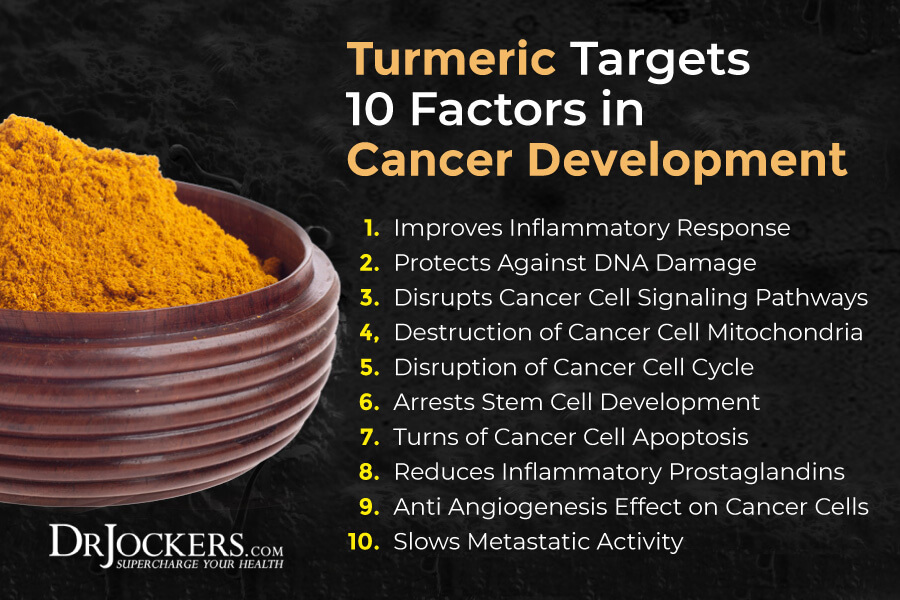
6. EGCG
Green tea is an abundant source of a polyphenol called epigallocatechin-3-gallate, better known as EGCG. The antioxidant potential of EGCG has been linked to a variety of health benefits with anti-cancer properties. Drinking green tea regularly may be responsible for reducing the risk of some cancers including breast, colon, prostate, and lung cancer. (14)
EGCG works by interrupting the signaling pathways associated with cancer stem cells. Consequently, this nutrient prevents cancer cell proliferation, inflammation, and metastasis. Studies show that EGCG inhibits vital proteins required for cancer stem cell survival and shuts off the mechanisms that trigger their growth (15).
Try sipping on green tea in the morning to reduce inflammation or adding green tea as a base for your smoothies. Opting for matcha green tea is the best strategy as it contains up to 10 times more EGCG than commercial green tea.
If using supplemental EGCG then go with a dose of 400-800 mg of ECGC, 1-2 times daily. Always use this earlier in the day as it is slightly stimulating. Green tea does reduce folate absorption, so it is advisable to consume extra raw green veggies (rich in folate) in salads or juices or supplement with an extra 400-500 mg of methyl-folate or calcium folinate if using green tea.
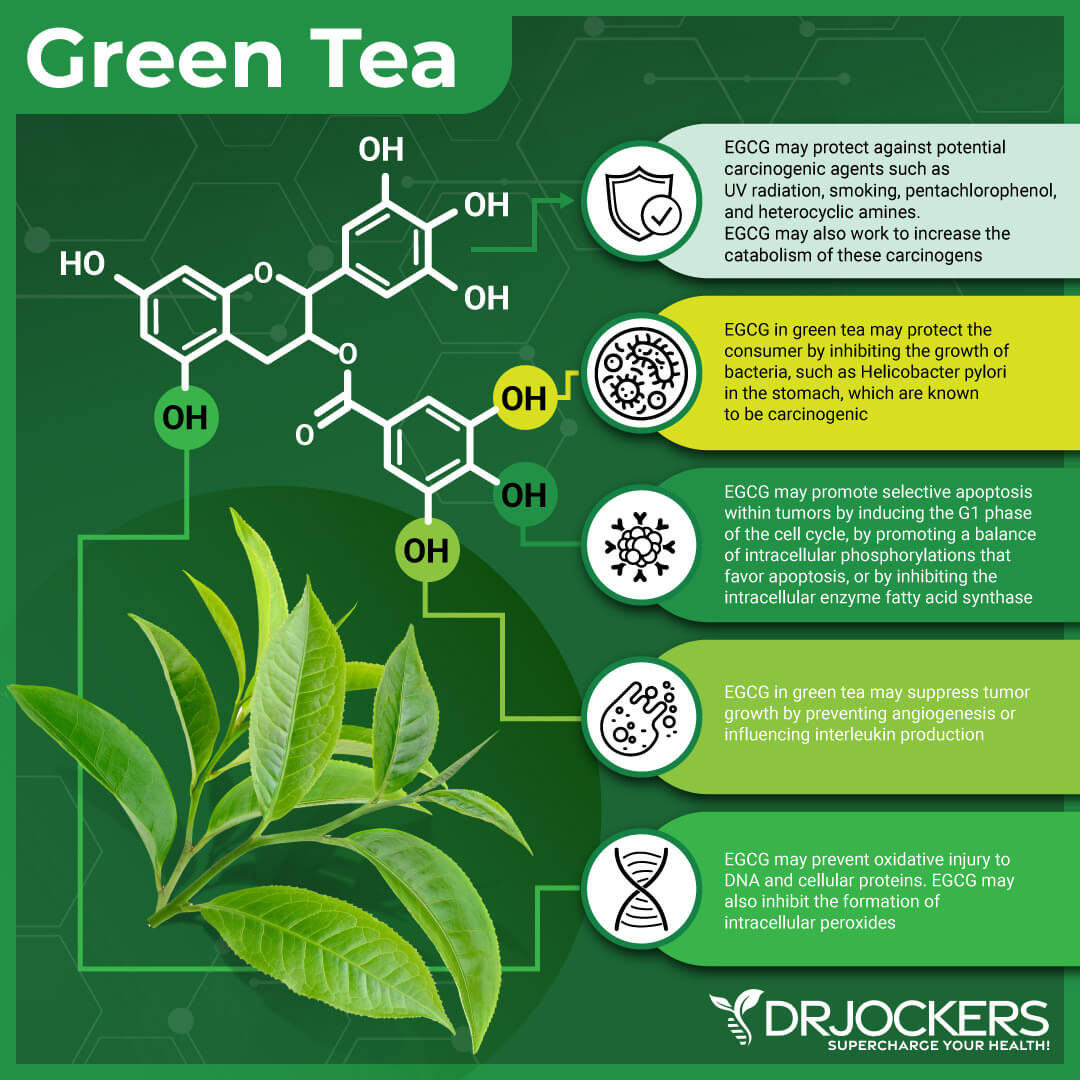 7. Resveratrol
7. Resveratrol
A naturally occurring phenolic compound called resveratrol is found in grape skins and red wine. Resveratrol has a profound ability to prevent and heal metabolic conditions especially relating to cancer cells. Resveratrol protects cell’s ability to repair damage and extends their lifespan. (16)
Resveratrol has shown protective properties from cancer of the prostate, liver, pancreas, colon, skin, and many other organs (17). Resveratrol supplementation may be recommended for patients combating cancer to take upwards of more than 200 mg daily. Otherwise, healthy individuals may consume a supplemental dosage of 20-100 mg a day to receive optimal cancer stem cell-reducing health benefits.
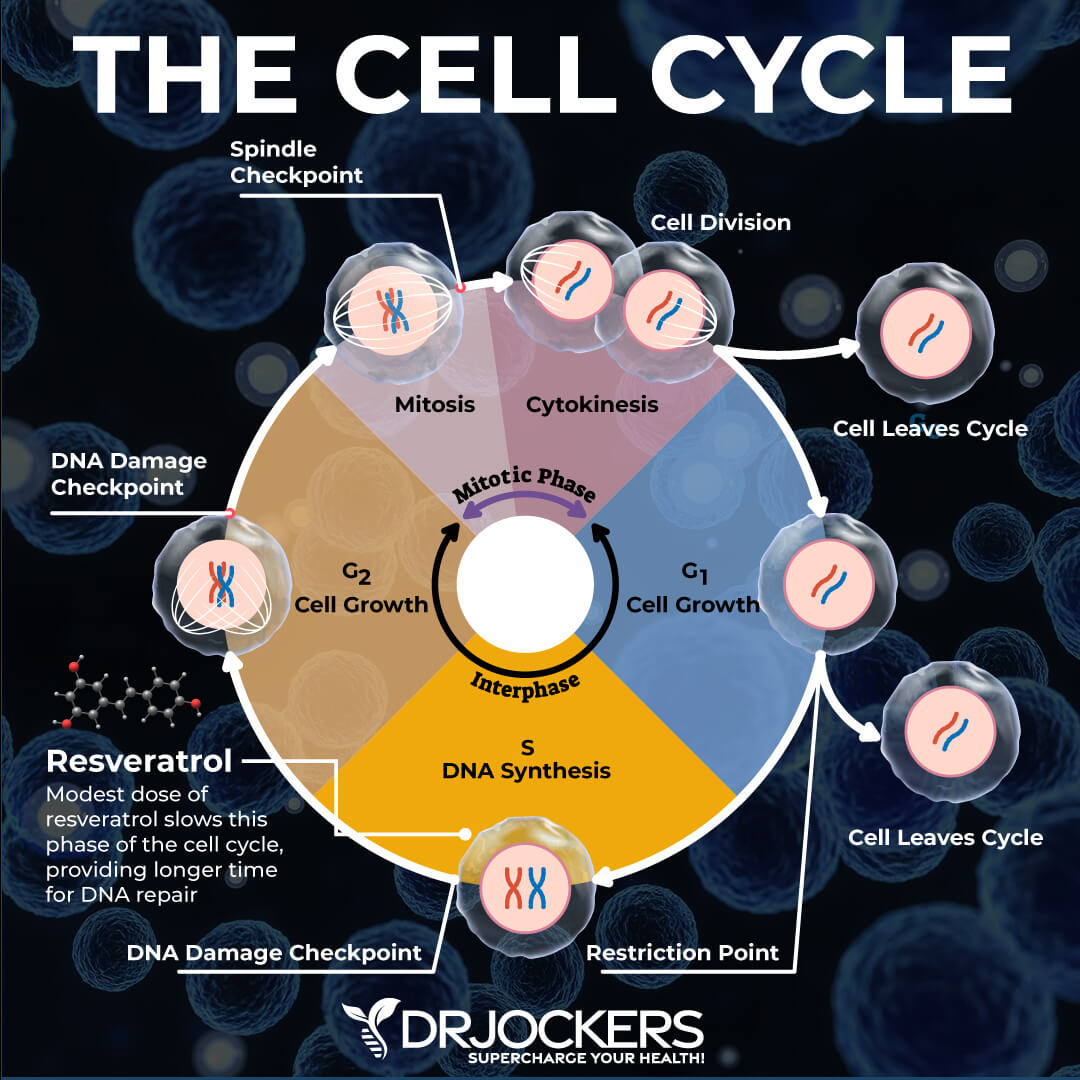
8. Vitamin D3
Each day the body produces approximately 10,000 cancer cells which can invade, proliferate, and spread (6). One of the most common factors involved in the pathogenesis of cancer is vitamin D3 deficiency. Receiving adequate amounts of vitamin D3 daily is necessary to destroy cancer stem cell activity.
A supplemental dosage of 20,000 I.U. vitamin D3 daily may be a reliable therapy to slow the progression of cancer and reduce systemic inflammation ( 5). Vitamin D3 supplementation is perhaps most vital in its need for proper GcMAF production.
GcMAF is a protein that improves the natural immune system response and treats cancer. GcMAF requires a steady intake of vitamin D3 to eradicate tumors completely. ( 6)

Today, our health is dominated by high doses of pharmaceutical drugs which decrease the ability of our bodies to naturally absorb vitamin D from the sun and our diets. Combined with our lack of time spent outdoors and decreased oxygen supply to cells, our bodies can provide a suitable environment for cancer stem cells to produce tumors.
You can increase the ability of your body to better absorb vitamin D by getting regular sun exposure and reducing stress, eating right and reducing pharmaceutical drug use.
It is best to get your vitamin D3 (25-OH) between 60-100 ng/ml with ideal ranges between 80-100 ng/ml for individuals looking to prevent or slow cancer growth.
As a general rule, many practitioners recommend taking 1,000 IU’s per 25 lbs of body weight to slowly raise your vitamin D levels into range or taking 2,000 IU’s per 25 lbs of body weight to quickly raise your vitamin D levels. This is an intelligent approach to reducing cancer stem cell activity.
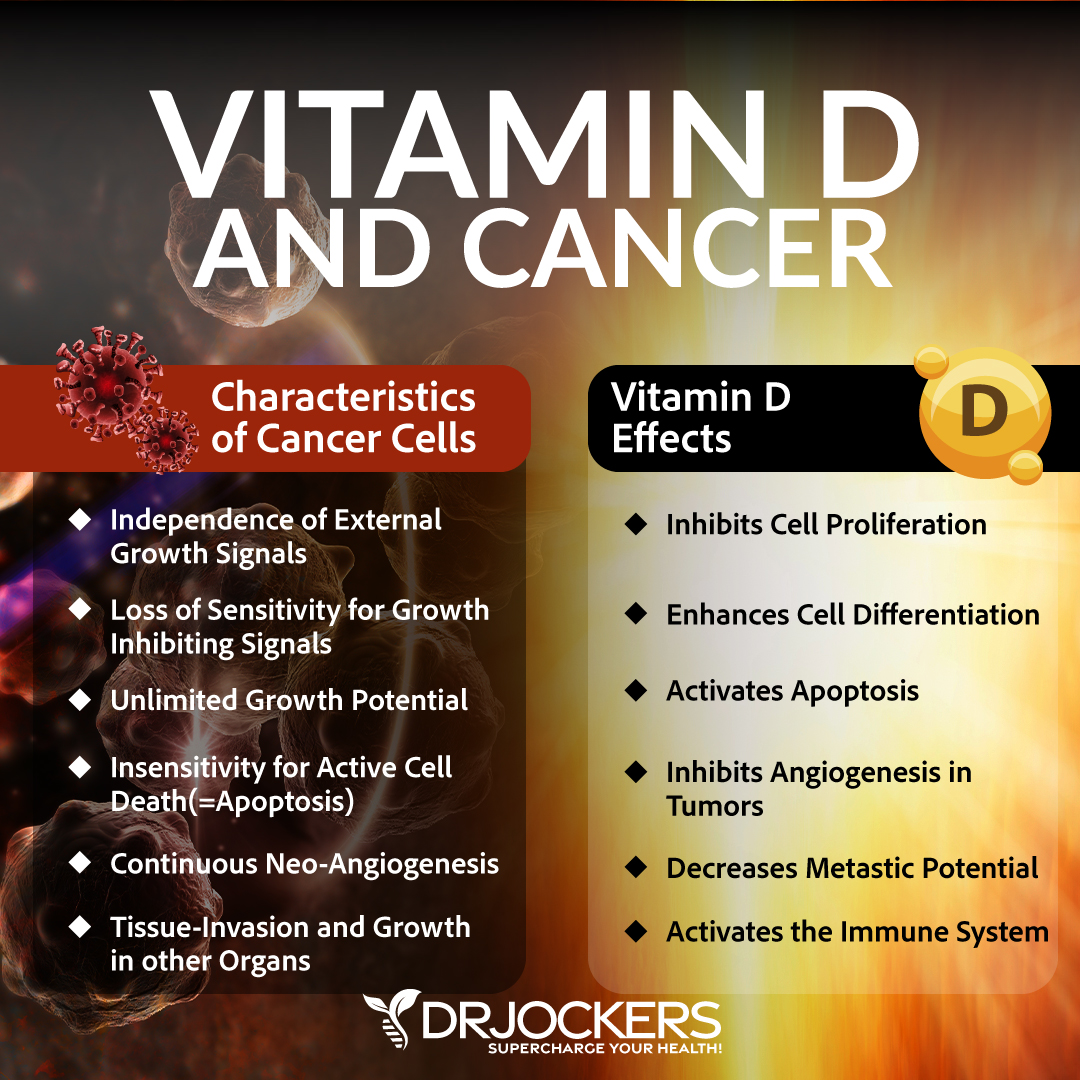
9. Silymarin
You may better know this healing nutrient as milk thistle. Silymarin is a flavonoid highly concentrated in milk thistle that protects the body from both skin and colon cancer by acting as a powerful detoxifying agent.
The primary use of milk thistle is designed to promote liver, kidney, and functioning of the gastrointestinal tract. Silymarin has also been therapeutic in the prevention and treatment of cancer cell growth of the skin, prostate, breast, and cervix. (11)
The chemotherapeutic effects of Silymarin are a result of its ability to improve oxygenation in blood cells and promote enzymatic activity of antioxidants such as superoxide dismutase (SOD) and glutathione. Silymarin prevents toxins from accumulating in the detoxifying organs of the body, improves their ability to function, and reduces the risk of cancerous cell growth. (11)
Consider taking 200 mg of milk thistle daily to protect your body from carcinogens and inflammation and to lower your risk of developing cancer. This is another great cancer stem cell treatment option.
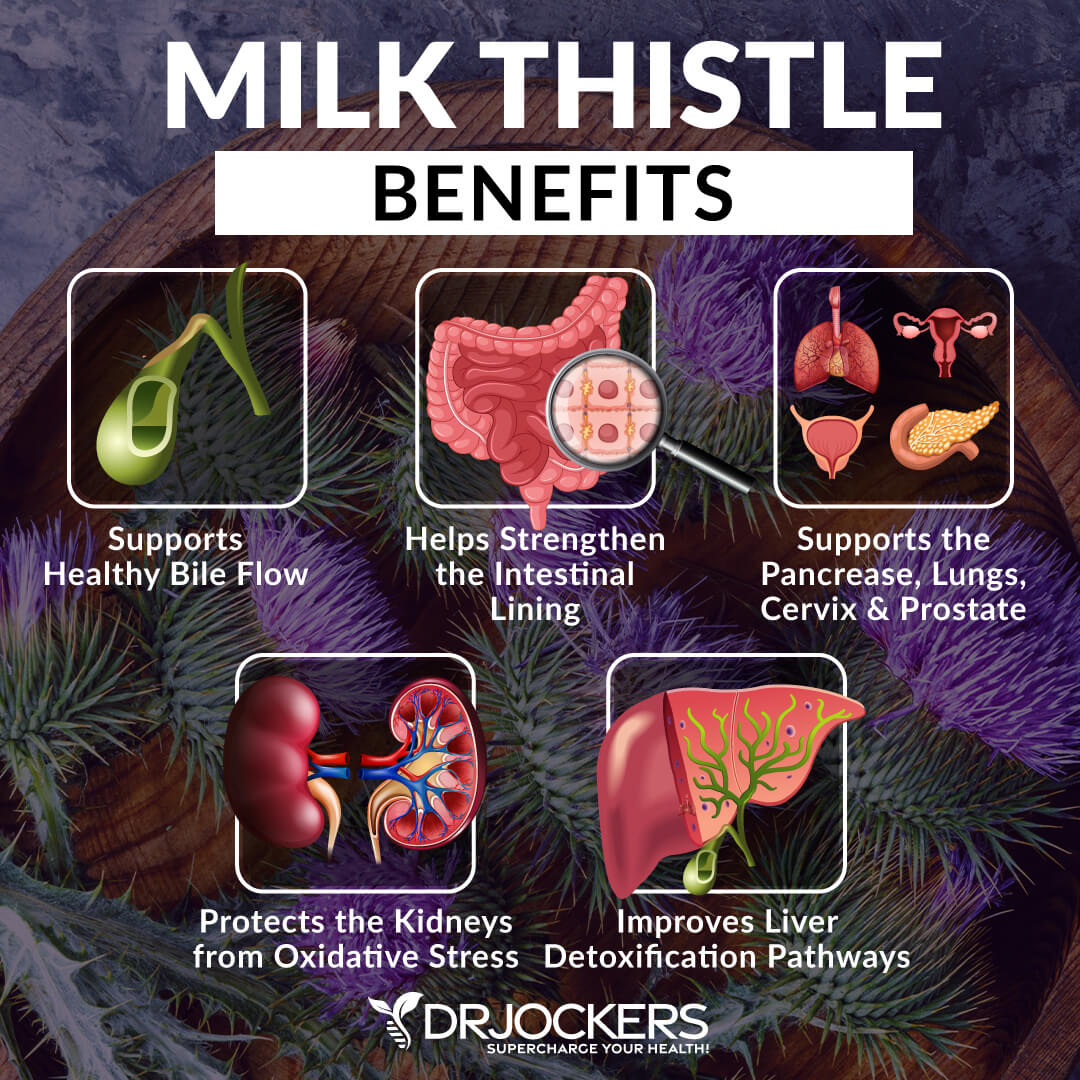
10. Quercetin
A dietary antioxidant quercetin is found in a variety of vegetables, fruits, teas, and wine. Quercetin targets cancer stem cells by interfering with signaling pathways related to free radicals such as reactive oxygen species.
Quercetin exhibits cancer prevention and treatment properties by improving the production of other antioxidant levels including glutathione and SOD which further scavenge free radicals involved in the signaling pathways of cancer stem cells. (18, 19)
Researchers have shown that high-dose quercetin has the potential to impair the expression of genes that activate cancer cells associated with leukemia (20). Often it is heard that an apple a day will keep the doctor away. Truth be told this old saying has some validity because apples, more specifically the peels of apples, contain quercetin.
Other quercetin-rich foods are raspberries, green tea, red onion, and dark-colored tomatoes. Due to its tremendous impact on relieving inflammation, quercetin supplements are often marketed to prevent the release of histamine associated with immune cell responses (20).
The ideal supplemental range for quercetin is thought to be 400-500mg – 2-3 times per day. This is a powerful cancer stem cell-killing therapy!
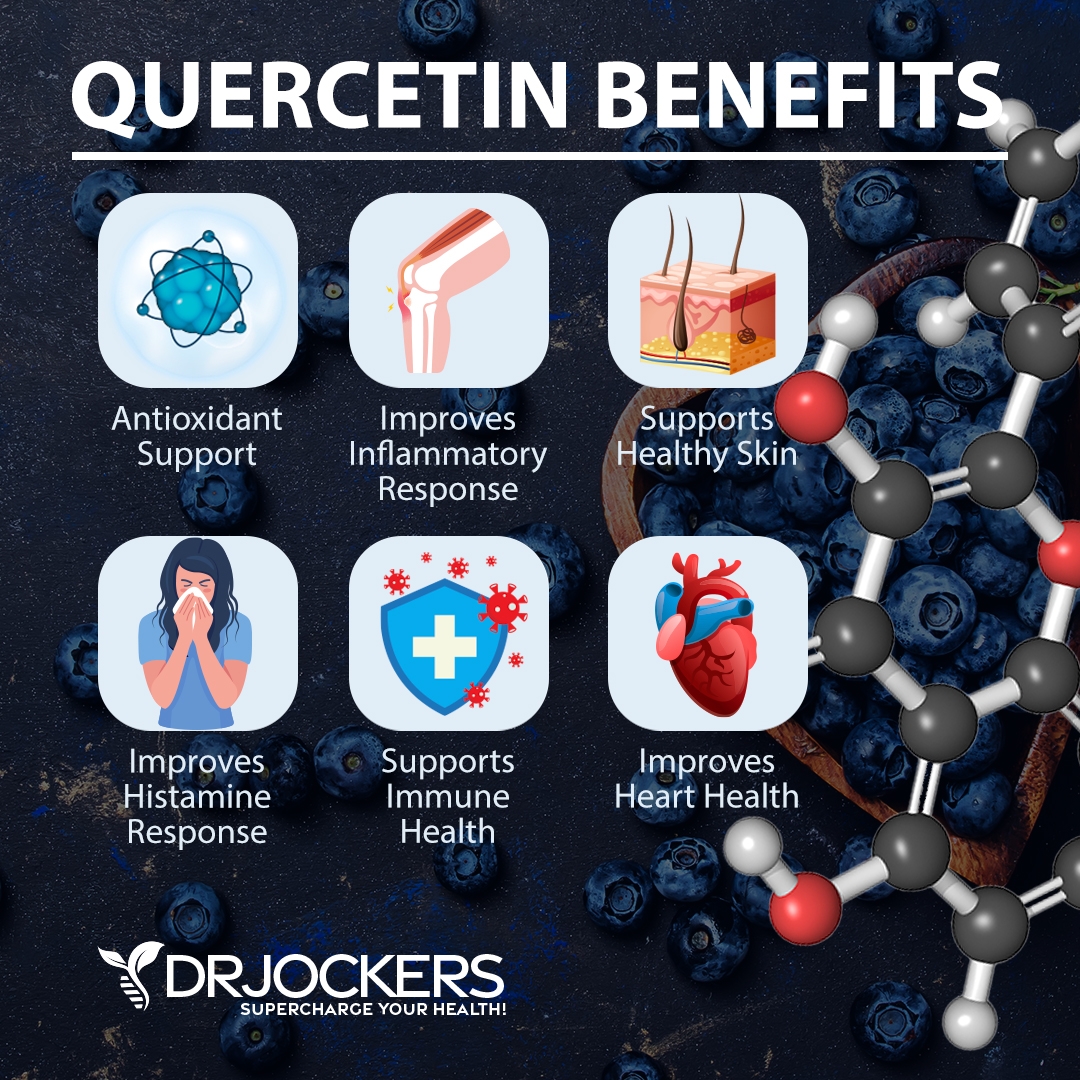
Others - Berberine
Commit to an Anti-Cancer Diet
Shutting down the signaling pathways that stimulate the pro-survival mechanisms of cancer stem cells is necessary to live a cancer-free life. The answer to killing cancer stem cells is found in our diets and must be committed to long-term.
Plant-based diets rich in phytochemicals that fight chronic inflammation, slow cellular aging, promote normal cellular functioning and most importantly target and destroy cancer stem cells are crucial to living a cancer-free life. Following a plant-based, ketogenic diet with cancer stem cell-killing nutrients and supplements is a powerful healing strategy!
If you want to work with a functional health coach, I recommend this article with tips on how to find a great coach. On our website, we offer long-distance functional health coaching programs. For further support with your health goals, just reach out—our fantastic coaches are here to support your journey.
Sources for this Article:
1. Prasad S, et al. Ursolic Acid Inhibits Growth and Metastasis of Human Colorectal Cancer in an Orthotopic Nude Mouse Model by Targeting Multiple Cell Signaling Pathways: Chemosensitization with Capecitabine. Clin Cancer REs. 2013 Sep; 18(18):4942-53. PMCID: 3677707
2. Tharmalingam N, et al. Inhibitory effect of piperine on Helicobacter pylori growth and adhesion to gastric adenocarcinoma cells. Infect Agent Cancer. 2014 Dec 16;9(1): 43. PMID: 25584066
3. Dourado GK, Stanilka JM, Percival SS, and Cesar TB. Chemopreventive Actions of Blond and Red-Fleshed Sweet Orange Juice on the Loucy Leukemia Cell Line. Asian Pac J Cancer Prev. 2015;16(15):6491-9. PMID: 26434864
4. Scarpa ES, and Ninfali P. Phytochemicals as Innovative Therapeutic Tools against Cancer Stem Cells. Int J Mol Sci. 2015 Jul; 16(7): 15727-42. PMCID: 519921
5. GcMAF Science Link Here
6. FIRSTiMMUNE Link Here
7. Yanaka A, et al. Dietary Sulforaphane-Rich Broccoli Sprouts Reduce Colonization and Attenuate Gastritis in Helicobacter pylori-Infected Mice and Humans. Cancer Prev Res (Phila). 2009 Apr;2(4):353-60. PMID: 19349290
8. Fahey JW, Zhang Y, and Talalay P. Broccoli sprouts: An exceptionally rich source of inducers of enzymes that protect against chemical carcinogens. Proc Natl Acad Sci. 1997 Sep;94(19)10367-72. PMCID:23369
9. Sehitoglu MH, et al. Anthocyanins: targeting of signaling networks in cancer stem cell. Asian Pac J Cancer PRev. 2014;15(5):2379-81. PMID: 24716988
10. Yao J, Ge C, Duan D, Zhang B, Cui X, Peng S, Liu Y, Fang J. Activation of the phase II enzymes for neuroprotection by ginger active constituent 6-dehydrogingerdione in PC12 cells. J Agric Food Chem. 2014 Jun 18;62(24):5507-18. PMID: 24869427
11. Post-White J, Ladas EJ, Kelly KM. Advances in the use of milk thistle (Silybum marianum). Integr Cancer Ther. 2007 Jun;6(2):104-9. PMID: 17548789
12. Moselhy J, et al. Natural Products that Target Cancer Stem Cell. Anticancer Res. 2015 Nov; 35 (11): 5773-88. PMID: 26503998
13. He Y, et al. Curcumin, inflammation, and chronic diseases: how are they linked? Molecules. 2015 May 20;20(5):9183-213. PMID:26007179
14. Na HK, and Surh YJ. Intracellular signaling network as a prime chemopreventive target of (-)- epigallocatechin gallate. Mol Nutr Food Res. 2006 Feb; 50(2): 152-9. Link Here
15. Tachibana H. Molecular basis for cancer chemoprevention by green tea polyphenol EGCG. Forum Nutr. 2009; 61:156-69. PMID:19367120
16. Howitz KT, Bitterman KJ, Cohen HY, Lamming DW, Lavu S, Wood JG, Zipkin RE, Chung P, Kisielewski A, Zhang LL, Scherer B, Sinclair DA. Small molecule activators of sirtuins extend Saccharomyces cerevisiae lifespan. Nature. 2003 Sep 11;425(6954):191-6. PMID:12939617
17. Singh CK, Pitschmann A, Ahmad N. Resveratrol-zinc combination for prostate cancer management. Cell Cycle. 2014;13(12):1867-74. PMID:24866157
18. Nieman DC, et al. Effects of Quercetin and EGCG on Mitochondrial Biogenesis and Immunity. Medicine & Science in Sports & Exercise. 2009;1467-1475. DOI: 10.1249/MSS.0b013e318199491f
19. Prior RL. Fruits and vegetables in the prevention of cellular oxidative damage. Am J Clin Nutr. 2003 Sep;78(3):570S-585S. PMID: 12936951
20. Walle T, Walle UK, and Halushka PV. J Nutr. 2001 Oct;131(10):2648-52. PMID: 11584085
21. Wang LS, et al. Anthocyanins in Black Raspberries Prevent Esophageal Tumors in Rats. Cancer Prev Res. 2009 Jan; 2(1): 84-93. PMID: 19139022
Read More: https://drjockers.com/cancer-stem-cell-killing-nutrients/
Related: Cancer Stem Cell series
.png)

.png)





.png)

Comments
Post a Comment